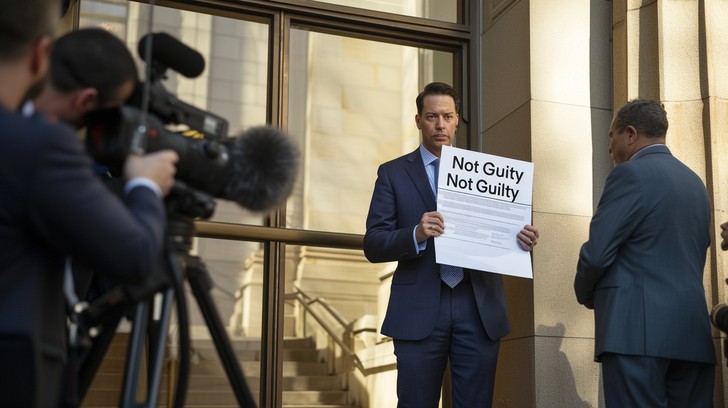Now Reading: Sec 498A : Interpretation and Evaluation
-
01
Sec 498A : Interpretation and Evaluation

Sec 498A : Interpretation and Evaluation
“Whenever a law is made very stringent under the pressure of emotionally surcharged social reaction, there is the danger of its misuse”-(Justice KT Thomas).
Sec 498A subjects to cruelty against cruelty and harassment against women. It also deals with convictions regarding this offence. It is a criminal law passed by parliament in 1983. There were many judicial decisions like Wazir Chand v. State of Haryana , Arnesh Kumar v. State of Bihar , Preeti Gupta v. State of Jharkhand , Sushil Kumar Sharma v. UOI , State of Haryana v. Bhajan Lal , Lalita Kumar v. State of Uttar Pradesh , Joginder Sharma v. State of Uttar Pradesh and Siddaran Sattingappa v. State of Maharashtra . The conviction rate in S-498A cases is 21.2% and in S-304-B cases, it is 35.8%. The number of cases reported under S-498A in the year 2011 is 99,135 and during the two previous years, they were 94,041 and 89,546. Thus, there is a slight increase (about 5%) in the reported cases every year(according to the national crime record bureau ). First of all the victims should know the guidelines issued by the Supreme Court of India for their protection. The guidelines given by the apex court on 2/7/2014 needs to be adhered to strictly. The victim (man or his family) can file the case under women under the different section like sec 191,192,193,209,211,499 and 500 and take help of ngo like 498.org.
INTRODUCTION
“The highest mode of wrong is the abuse of power “
A woman, a superior and important position in society, an idol of power and strength. Think what will be the condition or consequence when such an important position holder misuses her rights.
Sec – 498A of the Indian Penal Code, which was made for the protection of women from marital cruelty and harassment. But when we are seeing cases regarding that then there are more arrests than convictions that clearly means that’s there is the misuse of rights done by women’s.
Before justifying my statement lets figure out what exactly the law says-
Sec 498A[1] – Husband or relative of husband of a woman subjecting her to cruelty. Subjects such woman to cruelty shall be punished with imprisonment for a term which may extend to three years and shall also be liable to fine.
Cruelty here means-
(a) Any wilful conduct which is of such nature as is likely to drive the woman to commit suicide or to cause grave injury or danger to life, health(whether mental or physical) of the woman; or
(b) Harassment of the women where such harassment is with a view to coercing her or any person related to any unlawful demand for any property or valuable security or is on account of failure by her or any person related to her to meet such demand.
Sec 498A of Indian Penal Code defines offence regarding cruelty against married women. Offenders are liable for imprisonment as well as fine. The offence is non-bailable, non-compoundable (complaints can’t be withdrawn) and cognizable (arrests without investigating or warrant).It was passed by the Indian parliament in 1983. It can be invoked by wife/daughter in law or her relative.
JUDICIAL DECISIONS
WAZIR CHAND V. STATE OF HARYANA[2] – The first case recorded conviction under Sec 498A of IPC. The husband of the woman and his father were sentenced to one year and a fine of Rs 100.
ARNESH KUMAR V. STATE OF BIHAR[3]
Police officers shall not arrest the accused unnecessarily and Magistrate shall not authorise detention casually and mechanically – Failure to comply with these directions, shall, apart from rendering police officers concerned liable for departmental action, also make them liable to be punished for contempt of court.
PREETI GUPTA V. STATE OF JHARKHAND[4]
The Supreme Court observed that a serious relook of the provision is warranted by the Legislature. The Court said: “It is a matter of common knowledge that exaggerated versions of the incidents are reflected in a large number of complaints”. The Court took note of the common tendency to implicate husband and all his immediate relations.
SUSHIL KUMAR SHARMA V. UOI [5]
The Supreme Court lamented that in many instances, complaints under s.498A were being filed with an oblique motive to wreck personal vendetta. and observed. “It may, therefore, become necessary for the Legislature to find out ways how the makers of frivolous complaints or allegations can be 1 AIR 2010 SC 3363 2 2005 6 SCC 281 4 appropriately dealt with”. It was also observed that “by misuse of the provision, a new legal terrorism can be unleashed”.
STATE OF HARYANA V. BHAJAN LAL[6]
It is, therefore, manifestly clear that if any information disclosing a cognizable offence is laid before an officer in charge of a police station satisfying the requirements of Section 154(1) of the Code, the said police officer has no other option except to enter the substance thereof in the prescribed form, that is to say, to register a case on the basis of such information.
LALITA KUMARI V. STATE OF UTTAR PRADESH[7]
It is, therefore, manifestly clear that if any information disclosing a cognizable offence is laid before an officer in charge of a police station satisfying the requirements of Section 154(1) of the Code, the said police officer has no other option except to enter the substance thereof in the prescribed form, that is to say, to register a case on the basis of such information.
JOGINDER KUMAR V. STATE OF UTTAR PRADESH[8]
The investigating officers should remind themselves of the pertinent observations made by the Supreme Court.
SIDARAM SATLINGAPPA V. STATE OF MAHARSHTRA[9]
The arrest should be the last option and it should be restricted to those exceptional cases where arresting the accused is imperative in the facts and circumstances of that case.
STATISTICAL INFORMATION
According to the statistics published by National Crime Records Bureau for the year 2011, 3, 39,902 cases under S-498A were pending trial in various courts at the end of the year and 29,669 cases under S-304-B of IPC. The conviction rate in S-498A cases is 21.2% and in S-304-B cases, it is 35.8%. The number of cases reported under S-498A in the year 2011 is 99,135 and during the two previous years, they were 94,041 and 89,546. Thus, there is a slight increase (about 5%) in the reported cases every year.
As regard to compound ability, the Law Commission has given a comprehensive report (237th Report) under the title of “Compounding of IPC Offences”. The Commission recommended that the offence under Section 498A should be made a compoundable offence with the permission of Court.
In the 154th Report of the Law Commission, there was a recommendation to make the offence compoundable. Justice Mallimath Committee on Criminal Justice Reform also recommended that it should be made compoundable as well as bailable.
SUGGESTIONS
First of all the victims should know the guidelines issued by the Supreme Court of India for their protection. The guidelines given by the apex court on 2/7/2014 needs to be adhered to strictly. These guidelines[10] may be summarized thus:-
i) Sec 41 Cr Pc may be circulated with a list of items to be satisfied before the power of arrest is exercised;
ii) The power of arrest should not be automatically exercised, merely because of FIR being registered;
iii) The police officers affecting the arrest should furnish all the details as required under Sec 41 to the magistrate explaining the expediency to arrest and the need for further detention to be ordered by the magistrate. The material should satisfy the criteria laid down under Sec 41 Cr Pc.
iv) The magistrate must apply his mind to the police report before authorizing further detention of the accused persons and record his reasons in writing in support of his order.
The victim (man or his family) can file the case under women under the different section listed below
· Sec 191 of IPC – Giving false evidence
· Sec 192 of IPC – Fabricating false evidence
· Sec 193 of IPC – Punishment for false evidence
· Sec 209 of IPC – Dishonestly making false claim in court
· Sec 211 of IPC – False charge of offence made with intent to injure
· Sec 499 of IPC – Defamation
· Sec 500 of IPC – Punishment for defamation
There should be a body formed that protects and counsels victims and protect their right to livelihood, right to child custody, right to prove their innocence and right to terminate the injurious martial relationship.
NGO’S like 498A.org should be a given governmental support and recognition so that they do their work more effectively and fast.
View of former Justice KT Thomas –
In his article titled “women and law”[11] he expressed
“whenever a law is made very stringent under the pressure of emotionally surcharged social reaction, there is the danger of its misuse.”
He stated various points in the article I have stated a few of them below-
· After the constitution came into force, Parliament of India introduced various legislative measures to correct gender imbalance.
One of the important measures was towards liberating women from the scourge of the dowry system by introducing dowry prohibition law that was enacted in 1961.
· It is a law in which the burden of proof is on husband and his family to proof he did not commit the offence which means that if there is any accusation of having received or demanded dowry, it was for the accused to prove that he did not do so.
Conclusion
A suitable amendment to Sec 498-A is the imperative need of the hour. The number of false cases is not a material consideration, as even an accused person is harassed, it is sufficient to protect his rights. After all human rights of persons, whether of husband or wife or the relatives of the wife have to be protected.
[1] https://indiankanoon.org/doc/538436
[2] AIR 1989
[3] AIR 2014
[4] AIR 2010 SC 3363
[5] 2005 6 SCC 281
[6] AIR 1992 SC 604
[7] AIR 2012 SC 1515
[8] AIR 1994 SC 1349; (1954) 4 SCC 260
[9] AIR 2011 SC 312
[10] special leave petition (Crl) 9127 of 2013.
[11] http://www.thehindu.com/2004/02/19/stories/2004021902311000.htm









